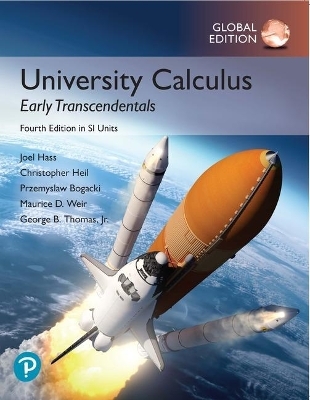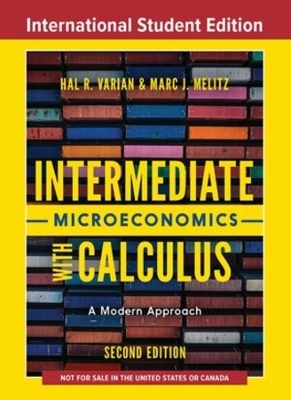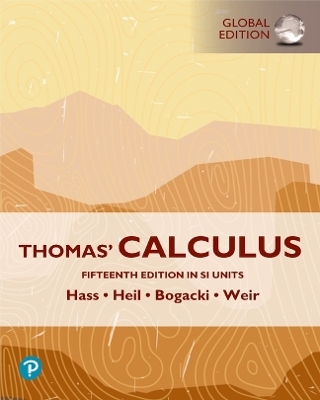
University Calculus: Early Transcendentals, Global Edition + MyLab Math with Pearson eText
Pearson Education Limited
978-1-292-31732-8 (ISBN)
This package includes MyLab.
For 3-semester or 4-quarter courses covering single variable and multivariable calculus, taken by students of mathematics, engineering, natural sciences, or economics.
Clear, precise, concise
University Calculus: Early Transcendentals helps students generalize and apply the key ideas of calculus through clear and precise explanations, thoughtfully chosen examples, meticulously crafted figures, and superior exercise sets. This text offers the right mix of basic, conceptual, and challenging exercises, along with meaningful applications. In the 4th SI Edition, new co-authors Chris Heil (Georgia Institute of Technology) and Przemyslaw Bogacki (Old Dominion University) partner with author Joel Hass to preserve the text's time-tested features while revisiting every word, figure, and MyLab (TM) question with today's students in mind.
Reach every student by pairing this text with Pearson MyLab Math
MyLab is the teaching and learning platform that empowers you to reach every student. By combining trusted author content with digital tools and a flexible platform, MyLab personalizes the learning experience and improves results for each student.
Pearson MyLab Math should only be purchased when required by an instructor. Please be sure you have the correct ISBN and Course ID. Instructors, contact your Pearson representative for more information.
1. Functions
1.1 Functions and Their Graphs
1.2 Combining Functions; Shifting and Scaling Graphs
1.3 Trigonometric Functions
1.4 Graphing with Software
1.5 Exponential Functions
1.6 Inverse Functions and Logarithms
2. Limits and Continuity
2.1 Rates of Change and Tangent Lines to Curves
2.2 Limit of a Function and Limit Laws
2.3 The Precise Definition of a Limit
2.4 One-Sided Limits
2.5 Continuity
2.6 Limits Involving Infinity; Asymptotes of Graphs
Questions to Guide Your Review
Practice Exercises
Additional and Advanced Exercises
3. Derivatives
3.1 Tangent Lines and the Derivative at a Point
3.2 The Derivative as a Function
3.3 Differentiation Rules
3.4 The Derivative as a Rate of Change
3.5 Derivatives of Trigonometric Functions
3.6 The Chain Rule
3.7 Implicit Differentiation
3.8 Derivatives of Inverse Functions and Logarithms
3.9 Inverse Trigonometric Functions
3.10 Related Rates
3.11 Linearization and Differentials
Questions to Guide Your Review
Practice Exercises
Additional and Advanced Exercises
4. Applications of Derivatives
4.1 Extreme Values of Functions on Closed Intervals
4.2 The Mean Value Theorem
4.3 Monotonic Functions and the First Derivative Test
4.4 Concavity and Curve Sketching
4.5 Indeterminate Forms and L’Hôpital’s Rule
4.6 Applied Optimization
4.7 Newton’s Method
4.8 Antiderivatives
Questions to Guide Your Review
Practice Exercises
Additional and Advanced Exercises
5. Integrals
5.1 Area and Estimating with Finite Sums
5.2 Sigma Notation and Limits of Finite Sums
5.3 The Definite Integral
5.4 The Fundamental Theorem of Calculus
5.5 Indefinite Integrals and the Substitution Method
5.6 Definite Integral Substitutions and the Area Between Curves
Questions to Guide Your Review
Practice Exercises
Additional and Advanced Exercises
6. Applications of Definite Integrals
6.1 Volumes Using Cross-Sections
6.2 Volumes Using Cylindrical Shells
6.3 Arc Length
6.4 Areas of Surfaces of Revolution
6.5 Work
6.6 Moments and Centers of Mass
Questions to Guide Your Review
Practice Exercises
Additional and Advanced Exercises
7. Integrals and Transcendental Functions
7.1 The Logarithm Defined as an Integral
7.2 Exponential Change and Separable Differential Equations
7.3 Hyperbolic Functions
Questions to Guide Your Review
Practice Exercises
Additional and Advanced Exercises
8. Techniques of Integration
8.1 Integration by Parts
8.2 Trigonometric Integrals
8.3 Trigonometric Substitutions
8.4 Integration of Rational Functions by Partial Fractions
| Erscheint lt. Verlag | 30.9.2019 |
|---|---|
| Verlagsort | Harlow |
| Sprache | englisch |
| Maße | 220 x 275 mm |
| Gewicht | 2161 g |
| Themenwelt | Mathematik / Informatik ► Mathematik ► Analysis |
| ISBN-10 | 1-292-31732-9 / 1292317329 |
| ISBN-13 | 978-1-292-31732-8 / 9781292317328 |
| Zustand | Neuware |
| Informationen gemäß Produktsicherheitsverordnung (GPSR) | |
| Haben Sie eine Frage zum Produkt? |
aus dem Bereich


